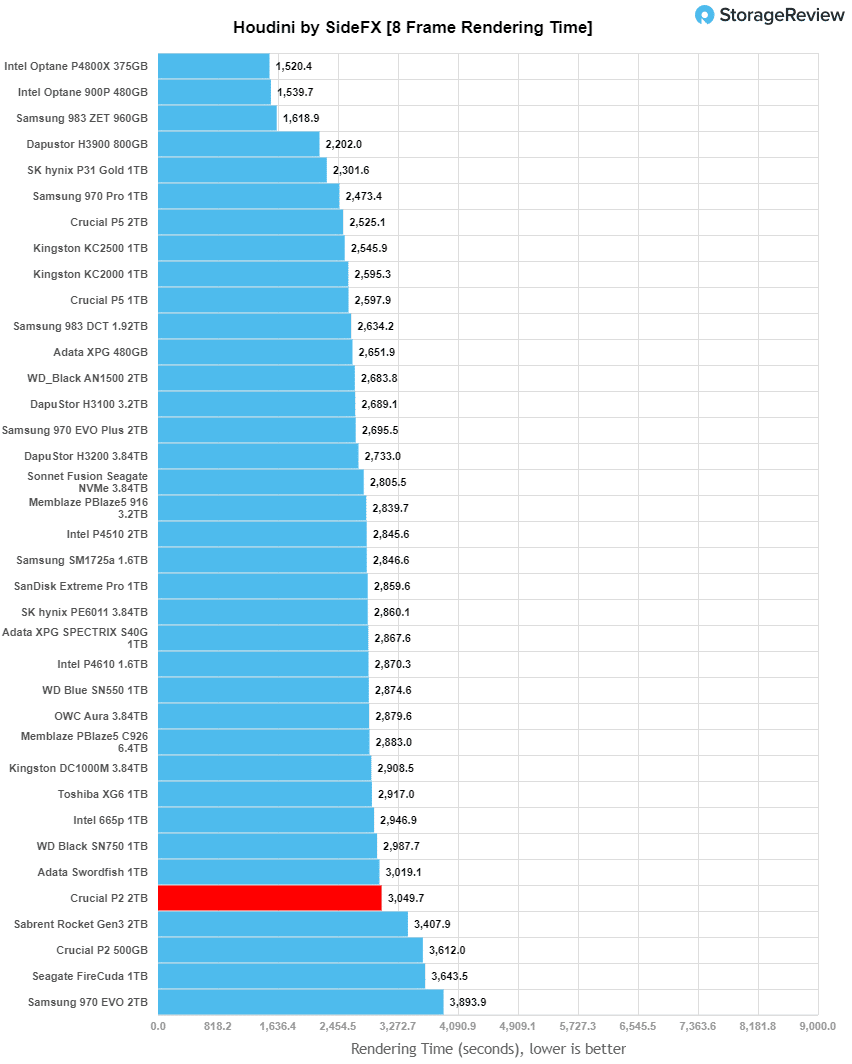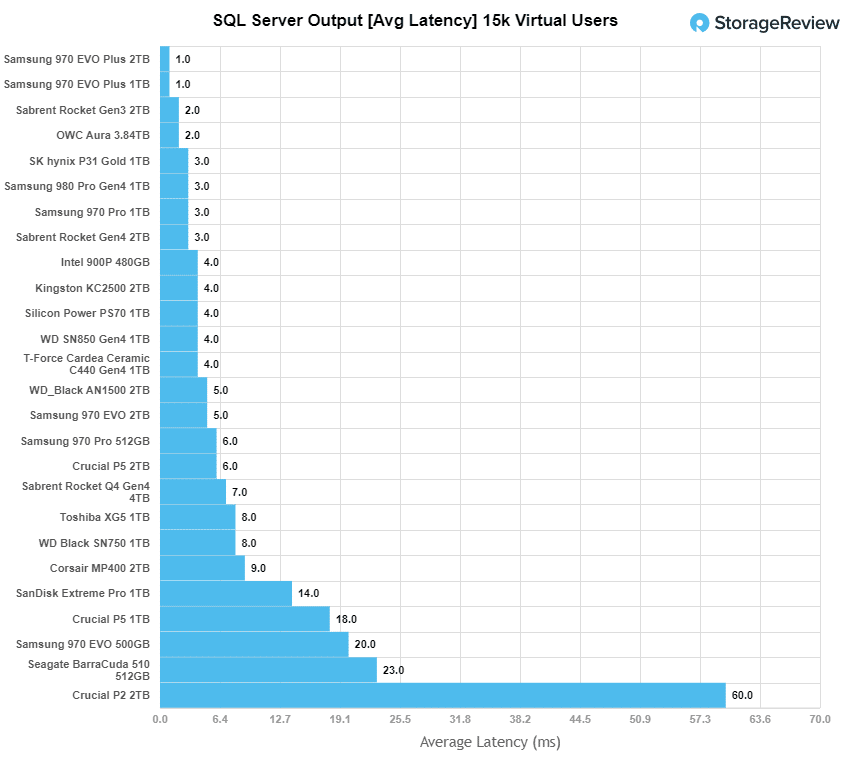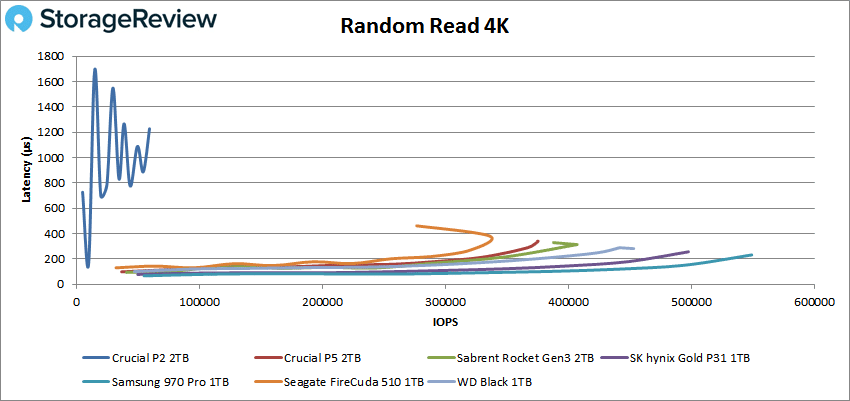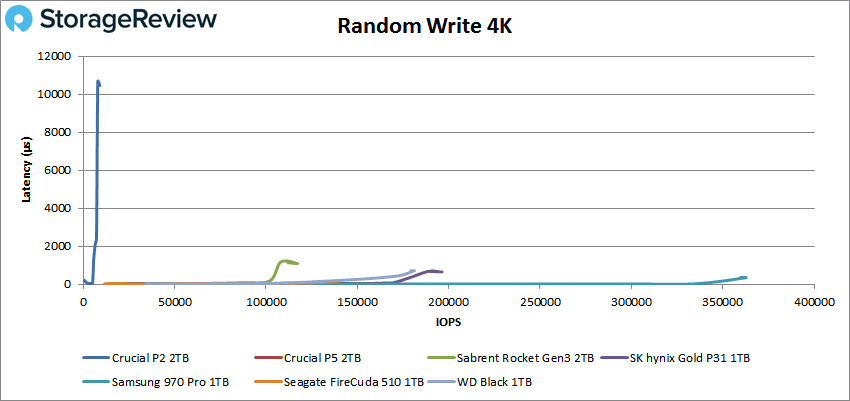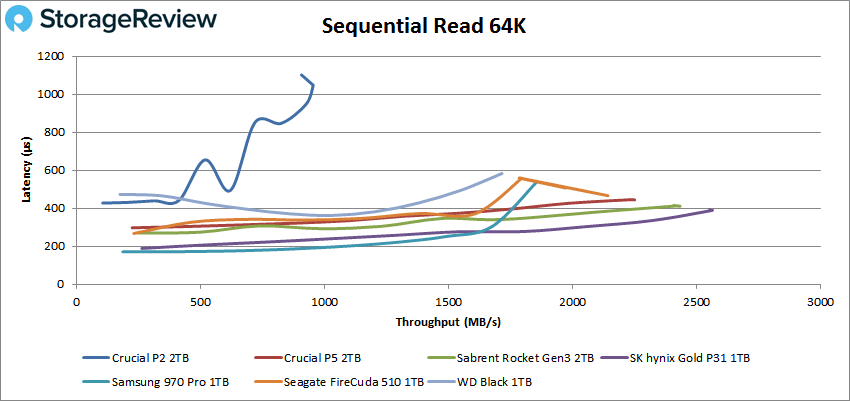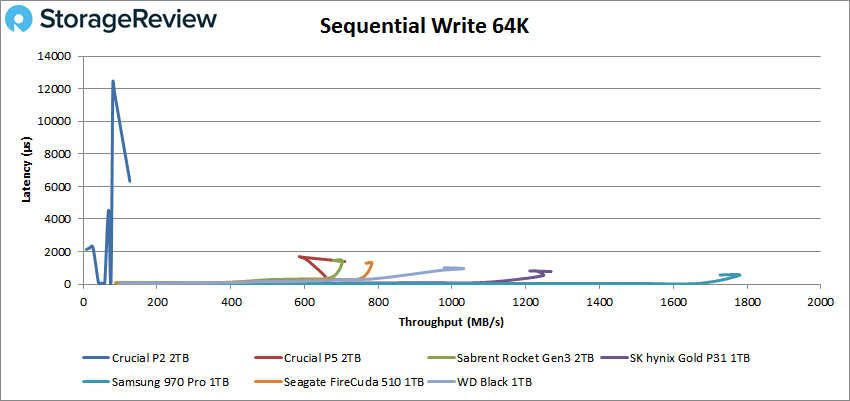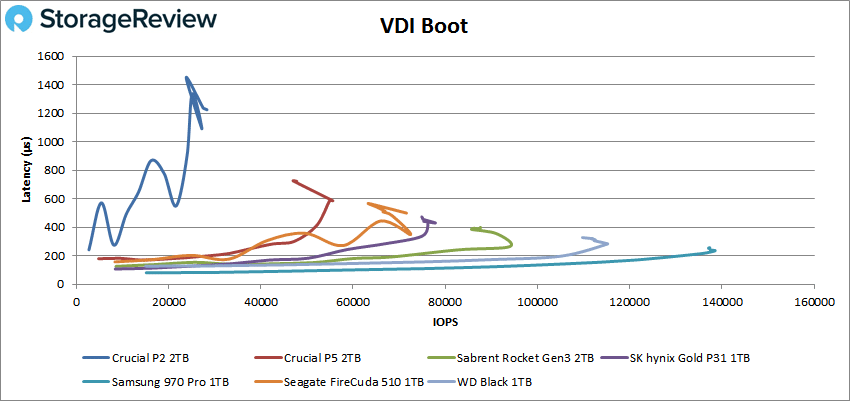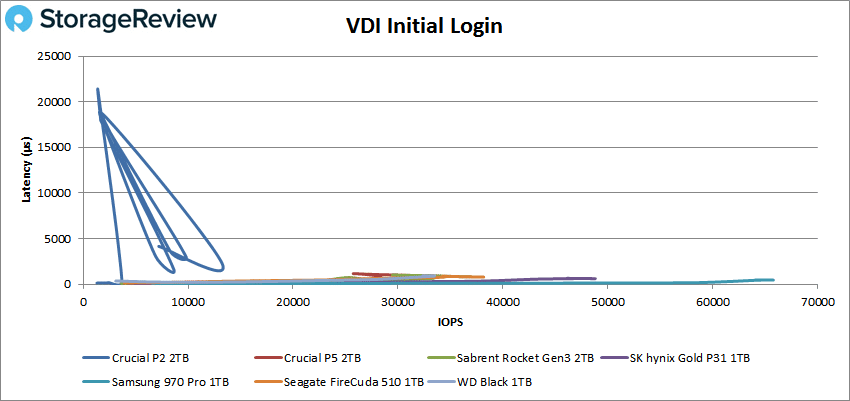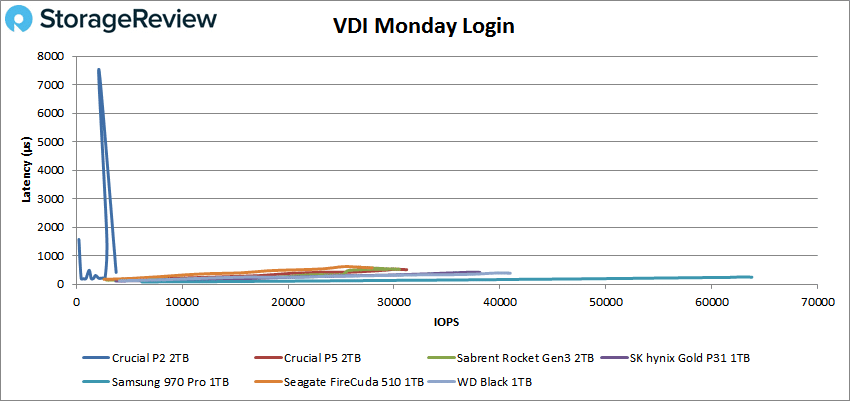The Crucial P2 was released, and reviewed by our team, earlier this year. The drive is a standard M.2 NVMe SSD that is aimed at being low-cost with decent performance for entry to mainstream use cases (think email and web browsing). The initial release came in 250GB and 500GB capacities, with more promised to come. Now Crucial released 1TB and 2TB capacities in the P2, the latter of which we will be looking at in this review.
The Crucial P2 was released, and reviewed by our team, earlier this year. The drive is a standard M.2 NVMe SSD that is aimed at being low-cost with decent performance for entry to mainstream use cases (think email and web browsing). The initial release came in 250GB and 500GB capacities, with more promised to come. Now Crucial released 1TB and 2TB capacities in the P2, the latter of which we will be looking at in this review.
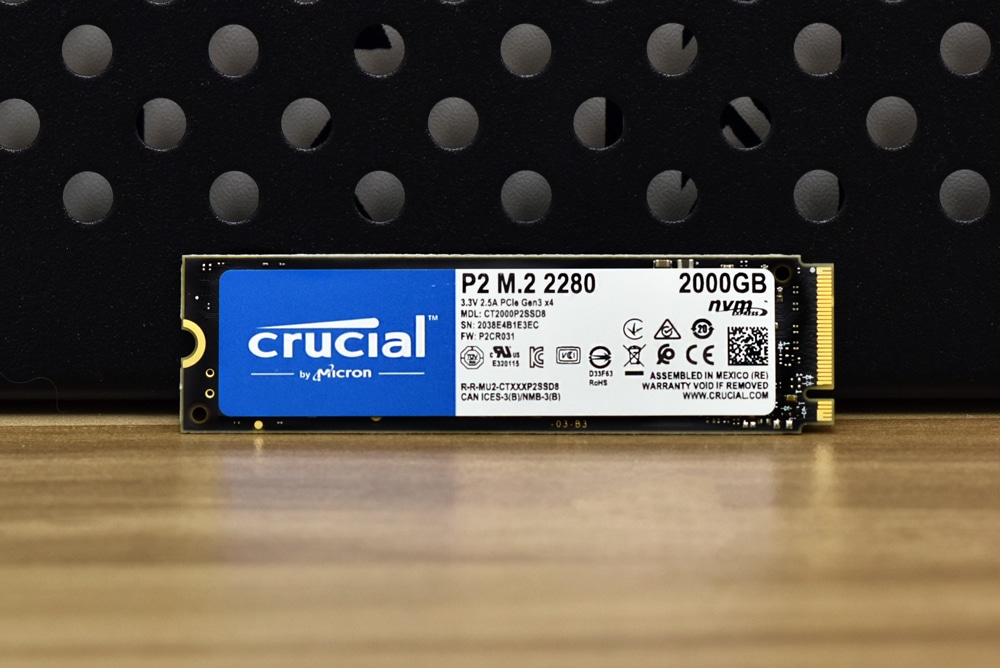
As stated in the previous review, the Crucial P2 is a step up from the company’s P1 line. The 2TB model comes with management software for performance optimization, data security, and firmware updates, as well as Acronis True Image for Crucial, the latter of which allows users to clone drives, and backup operating systems, applications, settings. The biggest difference, aside from more capacity, is higher performance, up to 2.4GB/s read, and higher endurance, up to 600 TBW.
The Crucial P2 2TB comes with a 5-year warranty and can be picked up for $221 today.
Crucial P2 NVMe SSD Review Specifications
| Interface | PCIe G3 1×4 / NVMe |
| Form factor | M.2 2280 |
| Capacities | 2TB |
| Performance | Sequential Read (up to) – 2,400 MB/s Sequential Write (up to) – 1,900 MB/s |
| Data Transfer Software | Acronis True Image for Crucial cloning software |
| Advanced Features | Dynamic Write Acceleration Redundant Array of Independent NAND (RAIN) Multistep Data Integrity Algorithms Adaptive Thermal Protection Integrated Power Loss Immunity Active Garbage Collection TRIM Support NVMe standard Self-Monitoring and Reporting Technology (SMART) Error Correction Code (ECC) NVMe Autonomous Power State Transition (APST) Support |
| Life Expectancy (MTTF) | 1.5 million hours |
| Endurance | 600 Total Bytes Written (TBW) |
| Warranty | Manufacturer’s 5 Year Limited |
Crucial P2 NVMe SSD Performance
Testbed
The test platform leveraged in these tests is a Dell PowerEdge R740xd server. We measure SATA performance through a Dell H730P RAID card inside this server, although we set the card in HBA mode only to disable the impact of RAID card cache. NVMe is tested natively through an M.2 to PCIe adapter card. The methodology used better reflects end-user workflow with the consistency, scalability and flexibility testing within virtualized server offers. A large focus is put on drive latency across the entire load range of the drive, not just at the smallest QD1 (Queue-Depth 1) levels. We do this because many of the common consumer benchmarks don’t adequately capture end-user workload profiles.
Houdini by SideFX
The Houdini test is specifically designed to evaluate storage performance as it relates to CGI rendering. The test bed for this application is a variant of the core Dell PowerEdge R740xd server type we use in the lab with dual Intel 6130 CPUs and 64GB DRAM. In this case, we installed Ubuntu Desktop (ubuntu-16.04.3-desktop-amd64) running bare metal. Output of the benchmark is measured in seconds to complete, with fewer being better.
The Maelstrom demo represents a section of the rendering pipeline that highlights the performance capabilities of storage by demonstrating its ability to effectively use the swap file as a form of extended memory. The test does not write out the result data or process the points in order to isolate the wall-time effect of the latency impact to the underlying storage component. The test itself is composed of five phases, three of which we run as part of the benchmark, which are as follows:
- Loads packed points from disk. This is the time to read from disk. This is single-threaded, which may limit overall throughput.
- Unpacks the points into a single flat array in order to allow them to be processed. If the points do not have dependency on other points, the working set could be adjusted to stay in-core. This step is multi-threaded.
- (Not Run) Processes the points.
- Repacks them into bucketed blocks suitable for storing back to disk. This step is multi-threaded.
- (Not Run) Writes the bucketed blocks back out to disk.
Here, we see the Crucial P2 render a score of 3049.673 seconds placing in the bottom third.
SQL Server Performance
Each SQL Server VM is configured with two vDisks: 100GB volume for boot and a 500GB volume for the database and log files. From a system resource perspective, we configured each VM with 16 vCPUs, 64GB of DRAM, and leveraged the LSI Logic SAS SCSI controller. While our Sysbench workloads tested previously saturated the platform in both storage I/O and capacity, the SQL test is looking for latency performance.
This test uses SQL Server 2014 running on Windows Server 2012 R2 guest VMs and is stressed by Quest’s Benchmark Factory for Databases. StorageReview’s Microsoft SQL Server OLTP testing protocol employs the current draft of the Transaction Processing Performance Council’s Benchmark C (TPC-C), an online transaction-processing benchmark that simulates the activities found in complex application environments.
The TPC-C benchmark comes closer than synthetic performance benchmarks to gauging the performance strengths and bottlenecks of storage infrastructure in database environments. Each instance of our SQL Server VM for this review uses a 333GB (1,500 scale) SQL Server database and measures the transactional performance and latency under a load of 15,000 virtual users.
SQL Server Testing Configuration (per VM)
- Windows Server 2012 R2
- Storage Footprint: 600GB allocated, 500GB used
- SQL Server 2014
- Database Size: 1,500 scale
-
- Virtual Client Load: 15,000
- RAM Buffer: 48GB
- Test Length: 3 hours
-
- 2.5 hours preconditioning
- 30 minutes sample period
The Crucial P2 2TB had an average latency of 60ms, taking the last place by a large margin.
VDBench Workload Analysis
When it comes to benchmarking storage devices, application testing is best, and synthetic testing comes in second place. While not a perfect representation of actual workloads, synthetic tests do help to baseline storage devices with a repeatability factor that makes it easy to do apples-to-apples comparison between competing solutions. These workloads offer a range of different testing profiles ranging from “four corners” tests, common database transfer size tests, to trace captures from different VDI environments.
All of these tests leverage the common vdBench workload generator, with a scripting engine to automate and capture results over a large compute testing cluster. This allows us to repeat the same workloads across a wide range of storage devices, including flash arrays and individual storage devices. Our testing process for these benchmarks fills the entire drive surface with data, then partitions a drive section equal to 5% of the drive capacity to simulate how the drive might respond to application workloads. This is different than full entropy tests which use 100% of the drive and take them into steady state. As a result, these figures will reflect higher-sustained write speeds.
Profiles:
- 4K Random Read: 100% Read, 128 threads, 0-120% iorate
- 4K Random Write: 100% Write, 64 threads, 0-120% iorate
- 64K Sequential Read: 100% Read, 16 threads, 0-120% iorate
- 64K Sequential Write: 100% Write, 8 threads, 0-120% iorate
Comparables for this review:
First up is random 4K read. Here the Crucial P2 peaked at 59,408 IOPS at a latency 1.2ms placing way behind the other drives.
4K random write again saw poor performance with the P2 taking last with a peak of only 9,057 IOPS and a latency of 10.5ms.
Switching over to sequential, the Crucial P2 remained its poor performance. In 64K read the drive peaked at 15,264 IOPS or 954MB/s with a latency of 1.1ms.
64K write saw the P2 fall to last with only 2,022 IOPS or 126MB/s with a latency of 6.3ms.
Next, we looked at our VDI benchmarks, which are designed to tax the drives even further. These tests include Boot, Initial Login, and Monday Login. Looking at the Boot test, the Crucial P2 continued its bad showing peaking at 28,323 IOPS at a latency of 1.2ms, compared to the top performers 138,475 IOPS, the Samsung.
VDI Initial Login the Crucial P2 stayed in the rear spiking latency back and forth. It had a peak of only about 13K IOPS at a latency of roughly 2.3ms, over 5 times the latency of the top performer with that also had over 650K IOPS.
Finally, in our VDI Monday Login, the P2 had a massive latency spike before finishing last with a peak of 3,750 IOPS at 414µs.
Conclusion
The Crucial P2 NVMe is an M.2 form factor SSD (leveraging TLC NAND), that aims to provide good performance at a very nice price point. The drive comes in capacities that range from 250GB to 2TB, reviewed here. The higher capacity offers better performance and endurance but still comes in at a reasonable price.
Looking at performance, this drive did not do well in any test. We ran our SQL Server latency test where the drive hit an average latency of 60ms. In Houdini, it did ok with a score of 3,049.7 seconds. Onto our VDBench, the drive placed last with poor performance and high latency in all tests. Peaks include 59K IOPS for 4K read, 9K IOPS for 4K write, 954MB/s for 64K read, and 126MB/s for 64K write. For our VDI Benchmarks, we saw peaks of 28K IOPS boot, 13K IOPS Initial Login, and 3,750 IOPS Monday Login.
If capacity is one’s main concern and they will only be doing light productivity work, the Crucial P2 (2TB) would be a fine drive. For anyone needing any better performance, there are lots of other options out there.
Engage with StorageReview
Newsletter | YouTube | Podcast iTunes/Spotify | Instagram | Twitter | Facebook | RSS Feed

